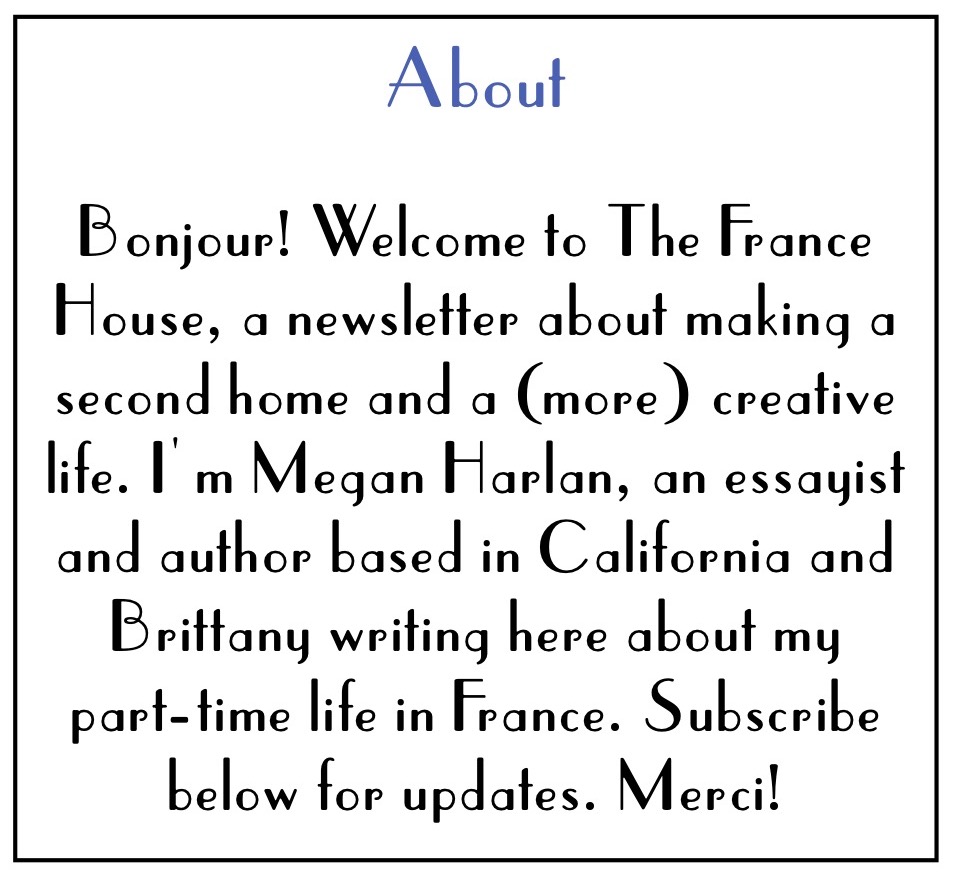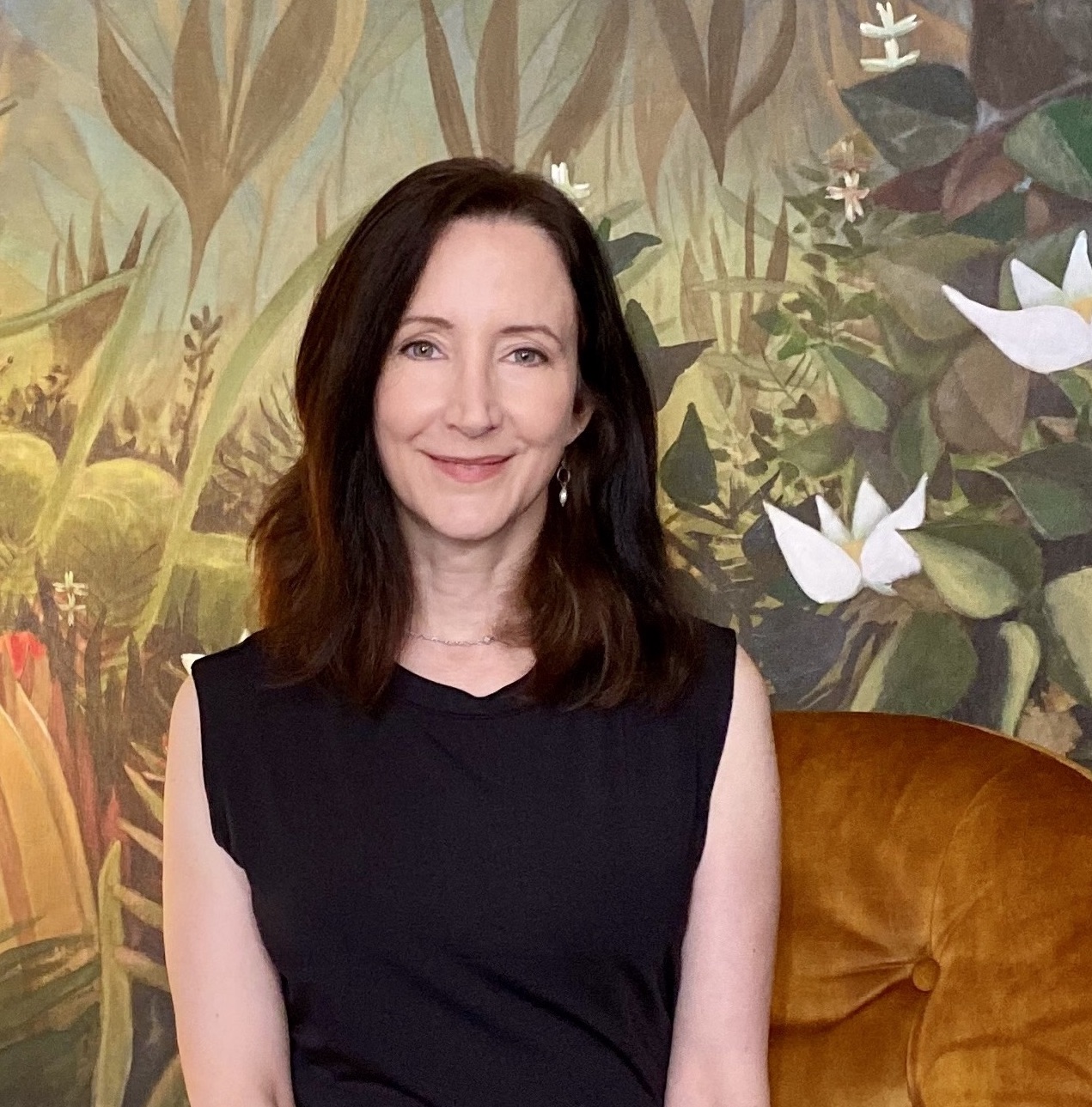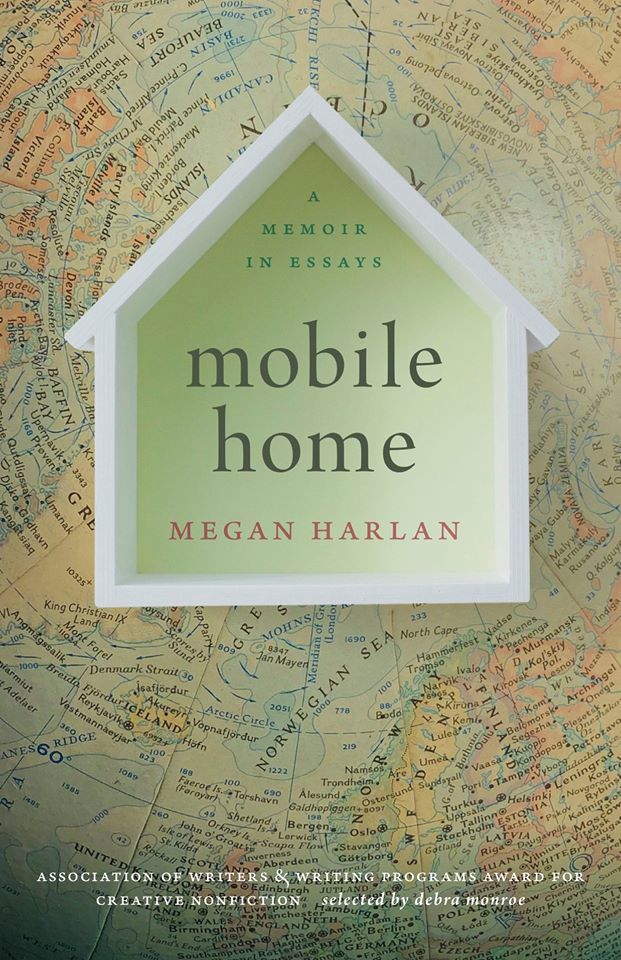On the spirals of Brittany, Celtic symbolism, and the natural world.
By Megan Harlan
From the top of the France House looking down its staircase, you see two entwining spirals: a larger outer spiral of hand-carved oak steps descending counter-clockwise like neatly fanned wooden petals, and a beautiful inner spiral of a single wooden banister coiling down the height of three stories. The banister is a marvel of bespoke Old World carpentry, at least to Californians like us: it is perfectly carved from a single tree per floor. By the third floor, it stands about 25 feet, helpfully accompanying the 34 sanded, time-smoothed steps—which can seem slippery as a slide in sock-feet.

a glimpse of the spiral staircase from the second-floor salon
Our house dates to around 1800, but these tightly wound spiral staircases featuring twisting, pillar-like banisters are found throughout Europe, often in places much older than the Enlightenment. They are vestigial design elements hailing from medieval castles, where a tower’s stairs usually lead counter-clockwise on the descent, based on the idea that a soldier wielding a sword in his right hand would have more room to fight off any unwelcome visitors climbing upward. As for our distinctive spiral banister, this summer we spotted a similar but much older one at my favorite museum in Paris, the Musée de Cluny, devoted to Medieval art in France and Europe, where it’s propped against the corner of one exhibition hall:

a medieval “staircase newel” in the Musée de Cluny

word-of-the-day: newel
Its label identifies it as a “staircase newel”—an early form of central banister designed for spiral staircases—salvaged from Notre-Dame de Paris Cathedral’s long-lost Dagobert tower. This incredible piece of hand-spiraled oak dates to the 1400s.
Back in the France House, I’ve been up and down its winding staircase, holding on to that banister, many thousands of times now. My days in France involve step-counts that average 20,000—no small part of which includes our circular staircase. So I’ve had ample time and inspiration to ponder the spiral, a shape to which I’d not given much thought before—but one that’s also a key symbol of Celtic cultures, and often spotted around town in Dinan and more broadly across Brittany, where Celtic heritage is alive and well. In short, I’ve never seen so many spirals.
Brittany’s tourist trinkets are often emblazoned with them, such our key chains for the France House:

Breton keychains
This lovely triple spiral shape, the triskel (also known as triskele or triskelion), counts among the most ancient artistic symbols. I first remember seeing the triskel in Ireland as a decorative element on jewelry and signs—and where the symbol was first carved on an inner wall of Newgrange, the 5,200-year-old passage tomb in the Boyne Valley. It’s one repeated on ancient sites throughout the Celtic world, from Scotland to the Isle of Man to, yes, Brittany.
The three linked spirals are said to represent all sorts of spiritual meanings and religious entities: a triple goddess such as Brigid or the Morrigan; a related idea of the three stages of life embodied in the girl, the mother, and the grandmother; the soul, the mind, and the body; birth, death, and the afterlife; and so forth. You’ll even find variations of it in medieval churches, where it’s been re-imagined to signify Christianity’s masculine Trinity:

a triskel-shaped portal window in the 12th century abbey of Léhon

Léhon Abbey’s triskel window exterior
The spiral’s geometry is shaped by the most satisfying and magical sequence in mathematics: Fibonacci numbers, in which each number equals the sum of the two previous ones. Related to the golden ratio, this sequence sits at the heart of the natural world, defining the measurements of growth: how a plant’s leaves are arranged on its stems, how a storm has an eye, how a seashell forms a whorled structure. It was first documented in Sanskrit texts by India’s math-loving poets more than two thousand years ago, but later popularized in Europe by—you guessed it—an Italian mathematician called Fibonacci. His 1202 book on the subject laid out the mathematics of spirals, inspiring medieval architects to better design their castle staircases—among countless other artistic and creative innovations. My son was lucky to learn about how this simple sequence results in dazzling complexities when he was in UC Berkeley’s Math Circle as an elementary schooler—and when I was lucky to remember them. His favorite example: a seashell we brought back from Kauai that sits in his bookshelf.
We are a coast-loving family who’ve collected a good number of beach-combed seashells over the years. We felt immediately at home in Brittany’s long but narrow Atlantic peninsula, where the sea is never far from anywhere. From the France House in Dinan, the Emerald Coast is about 15 miles away, and we collect a seashell or two every time we visit a beach. But it was the decorator we’d hired in Brittany who brought us some gorgeous showpiece seashells for the salon’s shelves, along with antique French porcelain, North African sand-roses (delicate desert gems I used to hunt for as a kid in Saudi Arabia), and white coral; we added in an opalescent abalone shell, native to our Northern California coasts. I love how these Breton, Saharan, and Californian natural pieces are mixed in with nature-inspired French objets:

seashells, sand roses, porcelain
The great French Revolution-era writer and political theorist Madame de Staël once wrote: “The human mind always makes progress, but it is a progress in spirals.” Having firmly reached midlife, I believe life works this way too. If in my teens and 20s I imagined my hoped-for future as an ever-upward ascent, I now see—with a teenager of my own—the resonances and repetitions of certain themes cycling throughout my life; how it’s all been moving in a spiral. Any parent knows that eerie feeling of your child’s experiences reawakening long-ago memories: some cycle from your past coming back to meet you, variations on ideas, emotions, and incidents that wind through the generations. As we pass through so many unexpected dramas in our lives, we find ourselves swinging towards and away from a central core of self—a core we can’t shake or, in many ways, truly change. We spiral around it; we might as well embrace it. Spending time in the France House has brought me closer to it.

looking up the spiral staircase











